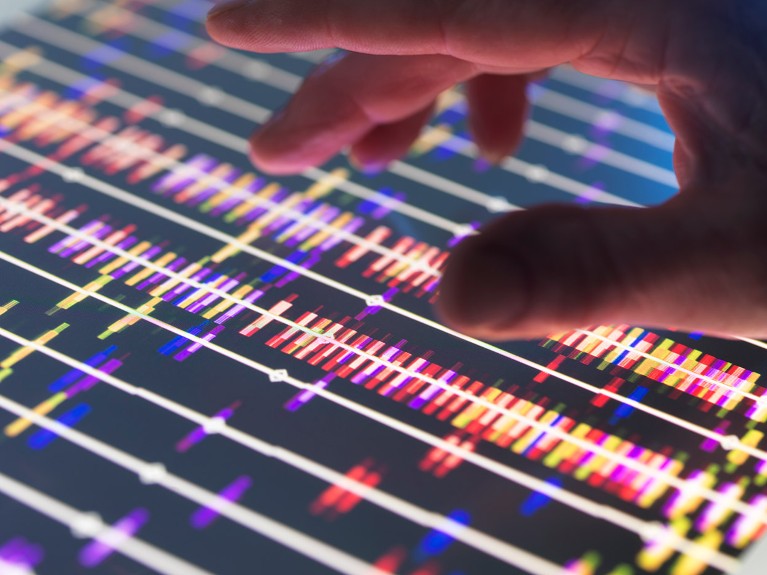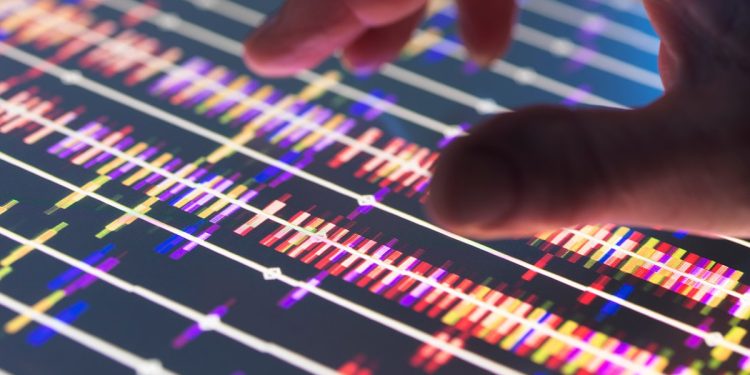
MetaGraph index and extensive archives of DNA, RNA and protein sequences. Scientists can search archives and trace biological contexts in Big Data.Credit: Andrew Brookes/Connect Images/Scientific Photo Library
Internet has Google. Now biology has MetaGraph. Detailed today in Nature1the search engine can quickly sift through the impressive volumes of biological data housed in public repositories.
“It’s a huge achievement,” says Rayan Chikhi, a bioinformatics researcher at the Pasteur Institute in Paris. “They set a new standard” for analyzing raw biological data – including DNA, RNA and protein sequences – from databases that can contain millions of billions of DNA letters, representing “petabases” of information, or more entries than all the web pages in Google’s vast index.
Although MetaGraph is labeled “Google for DNA,” Chikhi likens the tool to a search engine for YouTube because the tasks are more computationally demanding. In the same way that YouTube searches can retrieve every video featuring, say, red balloons, even when those keywords don’t appear in the title, tags, or description, MetaGraph can uncover genetic patterns hidden deep within a large sequencing dataset without needing those patterns to be explicitly annotated in advance.
“It allows things that couldn’t be done otherwise,” says Chikhi.

Clever software unravels gene regulation in cells
Indexing the Library of Life
The motivation behind MetaGraph was to solve an accessibility problem in sequencing datasets. The size of these repositories has grown at a rapid pace in recent decades, but this growth has presented challenges to scientists who use the data they contain. Raw sequencing reads are fragmented, noisy, and too numerous to search directly. “Paradoxically, the volume of data is the main obstacle to its use,” explains Babaian.
According to study author André Kahles, a bioinformatician at the Swiss Federal Institute of Technology Zurich (ETH) in Switzerland, MetaGraph could help researchers ask biological questions of repositories such as the Sequence Read Archive (SRA), a public database containing more than 100 million billion letters of DNA.2
They approached the problem using mathematical “graphs” that connect overlapping DNA fragments, much like sentences sharing the same words lined up in a book index.
The researchers integrated data from seven publicly funded data repositories, creating 18.8 million unique sets of DNA and RNA sequences and 210 billion sets of amino acid sequences across all groups of life, including viruses, bacteria, fungi, plants and animals, including humans. They also developed a search engine for these sequences, in which users use text prompts to search these embedded archives of raw data.
“It’s a whole new way to interact with this data set,” says Kahles. “It’s compressed, but accessible on the fly.”
The massive protein database that gave birth to AlphaFold and the AI revolution in biology
To demonstrate the utility of MetaGraph, the study authors used it to analyze 241,384 human gut microbiome samples for genetic indicators of antibiotic resistance around the world, building on work using an earlier version of the tool to track drug resistance genes in bacterial strains that live in the subways of large urban centers.3. The authors claim to have completed the analysis in about an hour on a high-powered computer.









